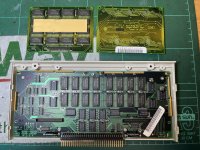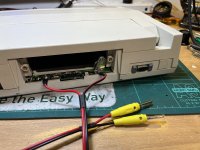clueless_engineer (Brett)
Member
Hello,
I have a model 45711B that includes 128KB of base system RAM with an additional 128KB of expansion RAM via a 82981A memory drawer.
Was wondering if anyone knew of home-brew versions of the 1MB expansion (82992A) and/or ROM expansion drawer (82982A)?
There are schematics available in the service manual so might have a crack at it myself ... if someone more qualified hasn't done this.
I have a video pulling mine apart here (if interested).
Brett.
I have a model 45711B that includes 128KB of base system RAM with an additional 128KB of expansion RAM via a 82981A memory drawer.
Was wondering if anyone knew of home-brew versions of the 1MB expansion (82992A) and/or ROM expansion drawer (82982A)?
There are schematics available in the service manual so might have a crack at it myself ... if someone more qualified hasn't done this.
I have a video pulling mine apart here (if interested).
Brett.


